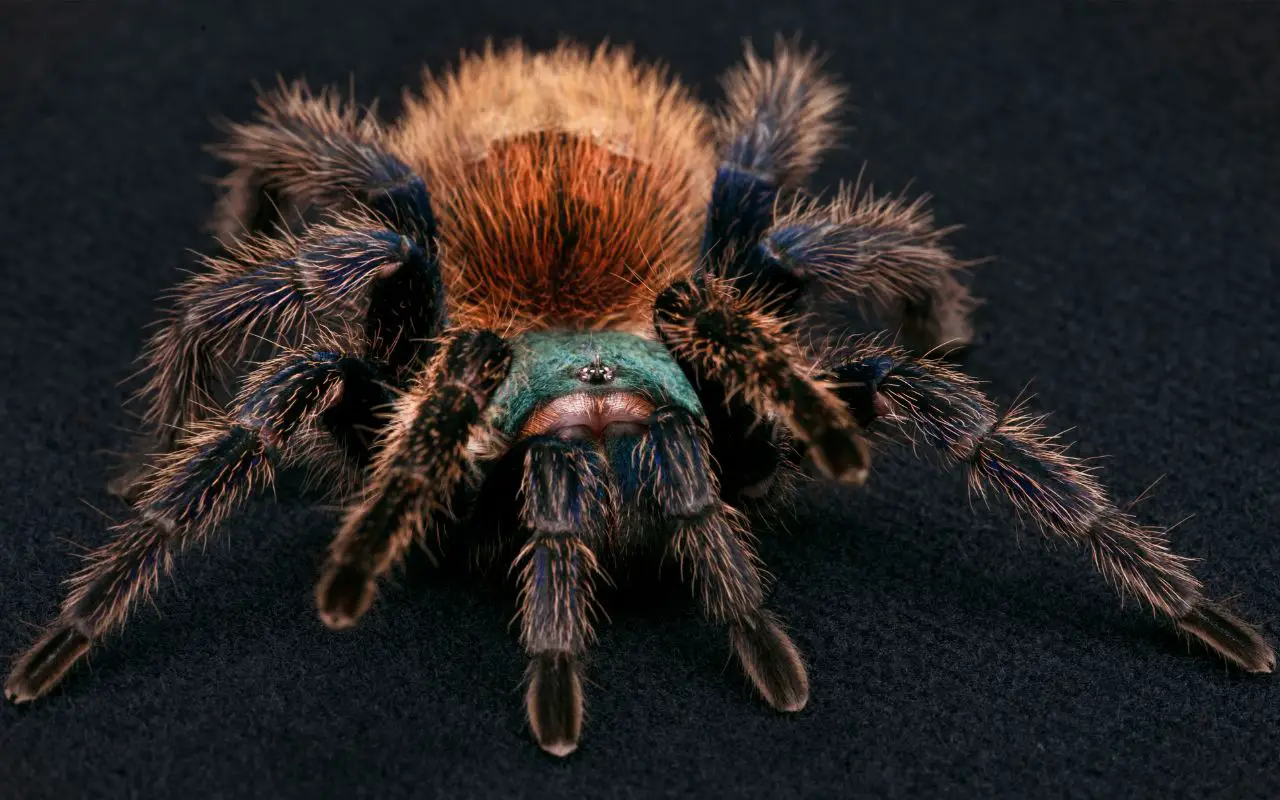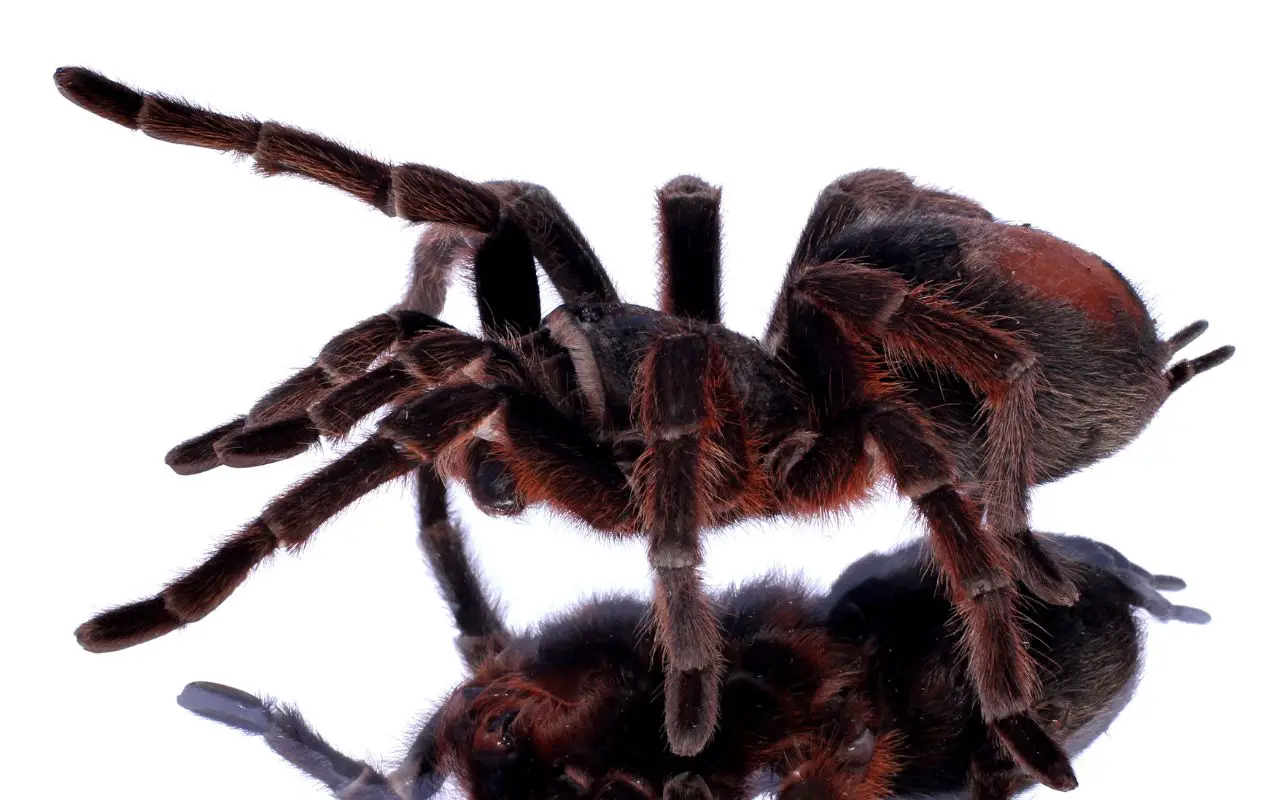Last updated on February 1st, 2023 at 10:09 am
The Chilean Rose Tarantula (Grammostola rosea) is a hardy, docile species from arid lands in South America. Let’s find out more about its care in captivity…
The Chilean Rose Tarantula is a tough species that has few health issues. Add to that their docile demeanor and extreme beauty, and what you get is one of the best pet tarantulas of all. In this care guide, we’ll take a look at their enclosure, substrate, diet, temperature and other needs.
Chilean Rose Tarantula enclosure
Since they are desert creatures, they do not require excessive humidity, misting, or spraying.
However, if you want to provide a healthy environment for your tarantula, you will need to use clean water and a substrate it can dig in. A good quality tarantula enclosure should be well-ventilated and include appropriate substrate, water dish, and at least one hiding place.
The substrate that you choose should be a good mix of peat moss, potting soil, or coco fibre. The substrate should be at least 3 inches deep and should be free of inorganic contaminants. A good substrate should have a moisture content of 60 to 70 percent. The enclosure should not be too high in order to provide adequate humidity.
The Chilean Rose Tarantula is a medium-sized nocturnal tarantula. Its leg span is about five inches and its body is covered with red or pink hairs. In the wild, it inhabits vacated rodent burrows. The female Chilean Rose Tarantula’s lifespan is twenty years, while the male’s is only two to five years. When it reaches adulthood, males almost cease molting completely as their sex organs prevent proper molting.
The enclosure size should be at least twice the width of their legspan in diameter. For adults a 5 or ten gallon tank will work, or a similar-sized plastic enclosure.
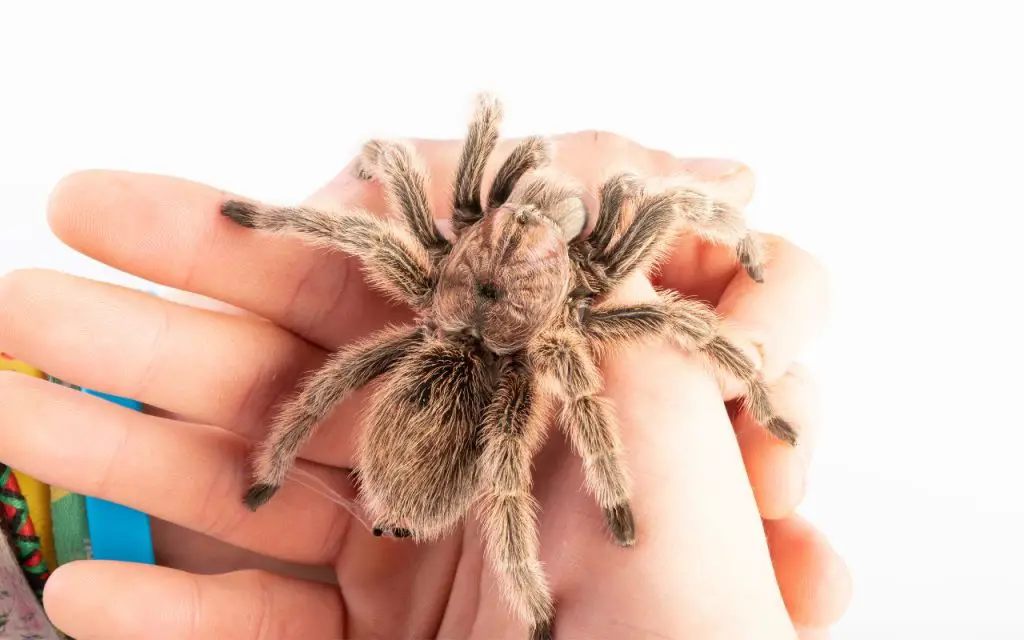
Substrate
When choosing a substrate for your Chilean rose hair tarantula, you will want to make sure that it’s moist but not too wet. A 70-30 mixture of peat moss and sand is a good choice. You can also substitute peat moss for potting soil.
Coco fibre will work well as a substrate for your Chilean rose tarantula, too. The substrate should be about half the height of the enclosure.
If you don’t want to use peat, you can just use Eco Earth, which is a widely available coco coir product. Substrates should be stratified so that the dampest layers are out of contact with your tarantula. The moist soil should be at the lower level of the cage, as it will evaporate to provide essential humidity for your tarantula. The top layer of the substrate should be drier.
Don’t use plain sand or other types of bedding with tarantulas.
Suitable substrates include:
- coco coir
- peat/topsoil/sand mix
- peat/topsoil/vermiculite mix
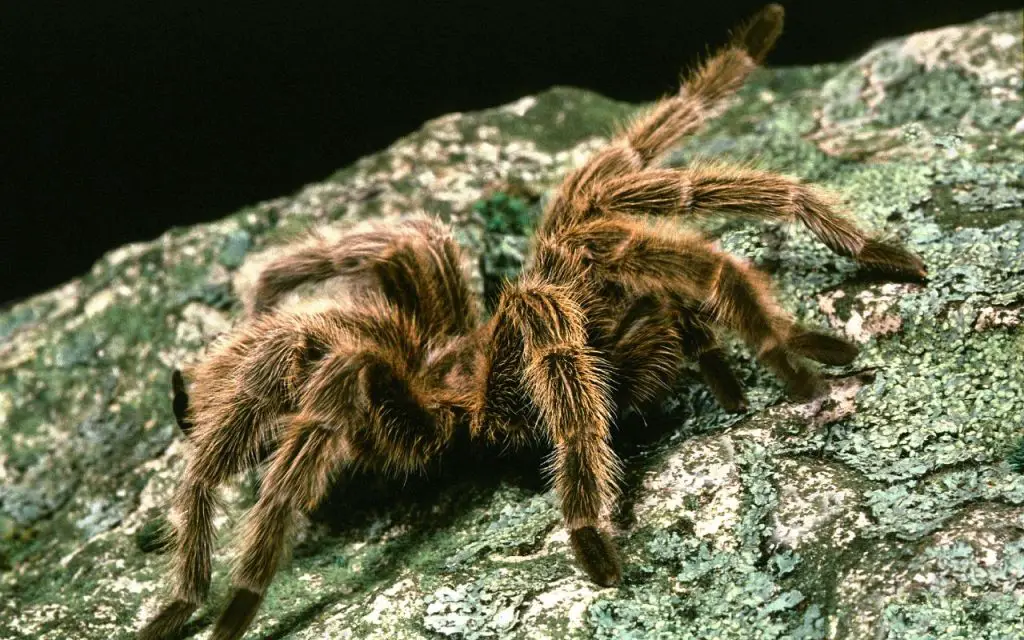
Chilean Rose Tarantula Temperature
As an ectotherm, a Chilean rose tarantula needs a specific range of temperature for optimal health. The ideal ambient temperature for this tarantula is around 73-74degF. However, to increase its comfort level, a small heat mat can be attached to the side of the enclosure if your house gets very cold during the winter.
An additional heat source is not usually necessary, and can be dangerous. If you do supply a heat pad, use a digital probe thermometer to measure the temperature of the enclosure and regulate it with a pulse-proportional or on/off thermostat.
The temperature of Chilean rose tarantulas fluctuates throughout the year, but they do prefer to avoid extreme temperatures. In fact, wild tarantulas synchronize their annual cycles to cope with the variations.
As a result, they have evolved in predictable patterns. Likewise, captive tarantulas should grown up in predictable conditions. And you should never attempt to keep a tarantula in a high temperature.
Chilean Rose Tarantula Diet
For optimal health and longevity, your tarantula should eat a variety of live crickets and pesticide-free insects. The best way to get started is to learn about the tarantula’s diet and its natural environment.
Generally speaking, most of these spiders will accept the following prey items:
- Crickets
- mealworms
- hornworms
- locusts
- waxworms
Though variety like this is good, they will do fine on crickets alone if these were fed a vitamin-rich diet. This is called gut-loading and you can ask your pet shop or supplier about it. This simple food requirement is part of what makes them good pets – they’re low maintenance, forever.
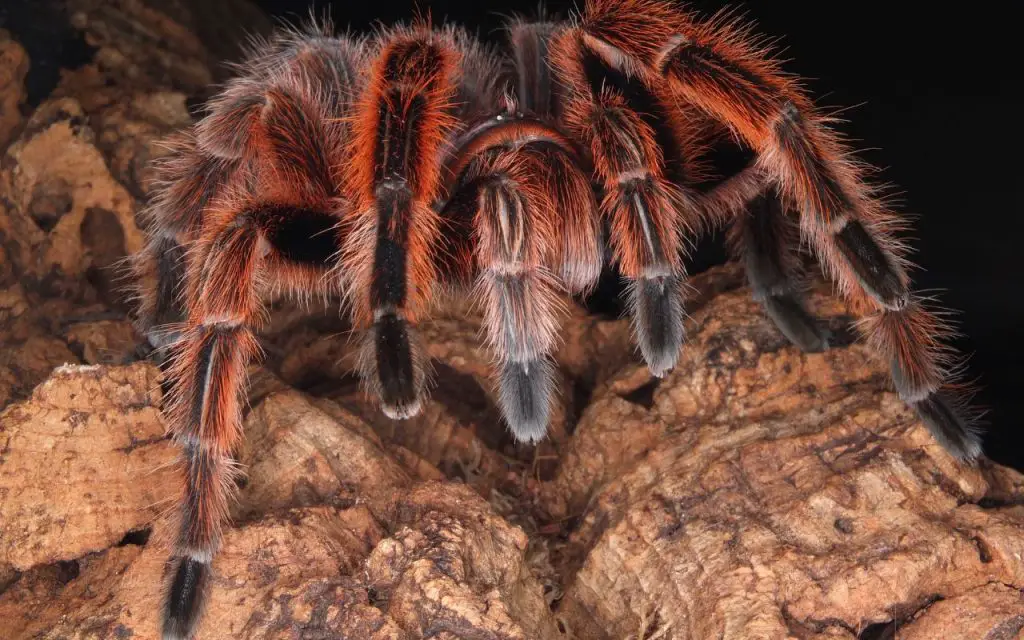
Chilean Rose Tarantula Price
The Chilean Rose Tarantula is one of the most widley kept and bred species of all. As such, it usually commands a low price. You can expect to pay between $30 and £50 for an adult, or sometimes as little as $15 for a spiderling (“sling”). Obviously, these prices vary, but a species with such high availability should never be expensive. Always shop around if you aren’t sure!
Chilean Rose Tarantula Lifespan
The life span of the Chilean Rose Tarantula varies depending on its gender. Although males tend to live shorter lives than females, this doesn’t mean that they are inferior. In fact, they are equally as hardy, with a body length of about three inches.
On average, males only live 2 to 5 years in total. Females on the other hand can live to twenty, so long as proper care is given. The key to giving them a good lifespan is providing a steady diet, and avoiding extremes in temperature or humidity.
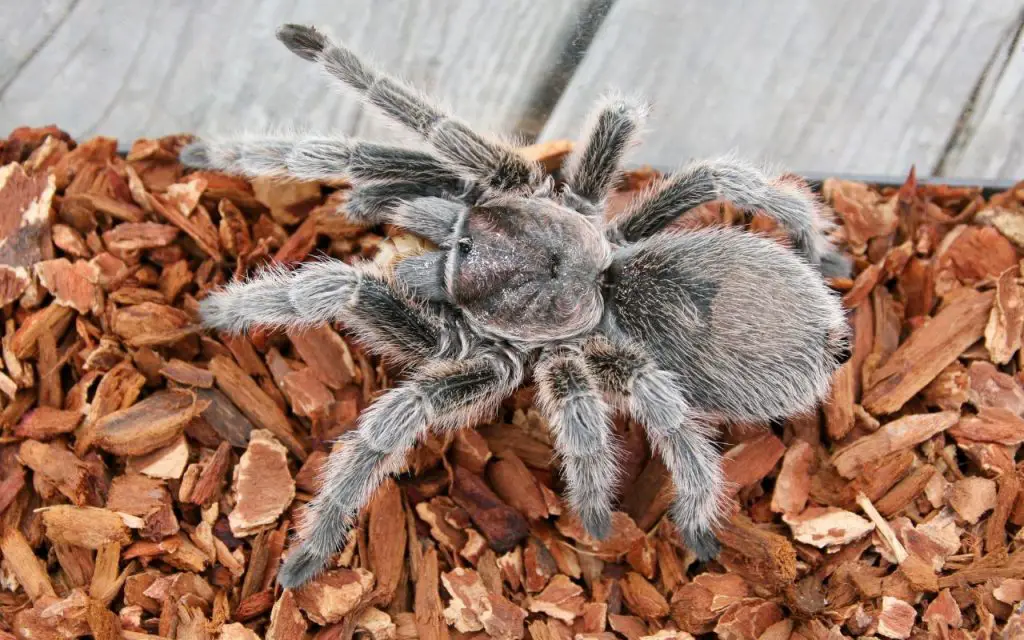
Water and humidity
The first step to establishing the best conditions for a Chilean rose hair tarantula is to find an enclosure. The ideal enclosure should be no higher than a foot tall, and should include a suitable hide. Hollow logs and terracotta flower pots cut in half work well.
You can also purchase reptile hides at pet stores. For the substrate, you should add at least three inches of clean soil and coconut husk fibers. Change the substrate regularly (every four to six months). It is the substrate that will hold the humidity needed, and in most areas the ambient humidity of your home will be enough.
As desert animals, they don’t do well with high humidity. You shouldn’t let their enclosure get damp or spray them as it will lead to illness sooner or later.
Instead, just provide them a very shallow water dish, with some sponge or pebbles in the bottom so that there is no chance of them drowning.
Handling
The best way to handle this tarantula is to be patient and try to avoid stress. New World tarantulas are typically calm and submissive, so handling is safe. However, they are quite sensitive and can become stressed if they are handled too harshly.
While Chilean Rose Tarantulas are docile and tolerant, excessive handling may cause stress. This can be especially damaging if you handle it while it is molting. Besides this, a Chilean Rose Tarantula can be spooked by moving air. If it senses danger, it will flee and exhibit a threatening pose by kicking its urticating hairs at you.
In general, I would say that this species is slightly less docile than the Brazilian Black, but not by a lot. They rarely bite, and if you’re unlucky enough to get a grouchy one, it will give you a warning by raising their front legs – you’ll know it if you see it!
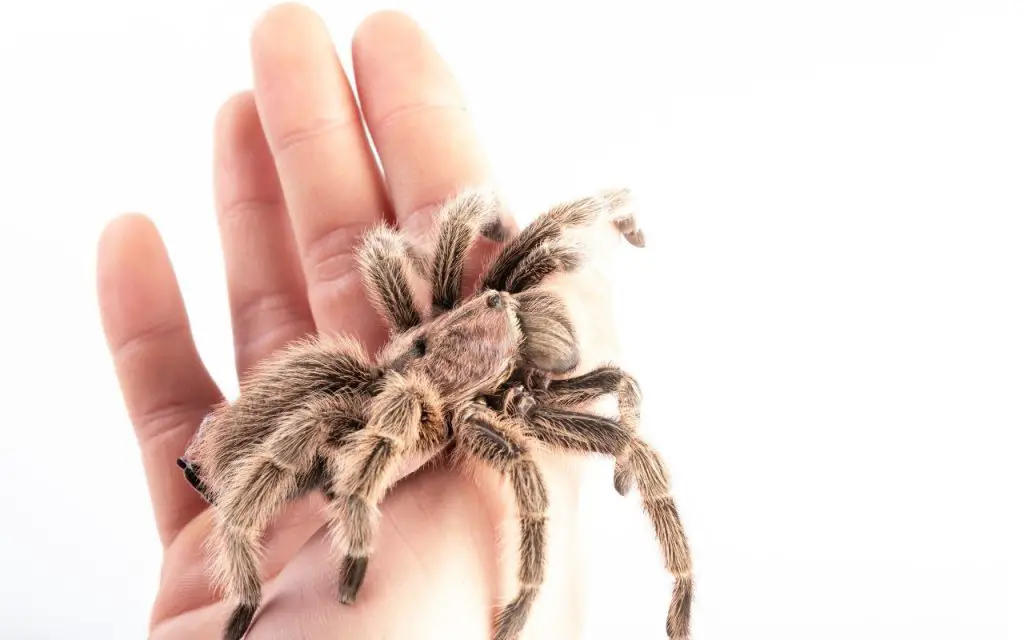
Chilean Rose Tarantula FAQs
How often to feed a Chilean rose tarantula?
Most tarantulas do well if fed around half a dozen crickets a week. You can feed them in one go, but I prefer to divide it into two feeding sessions a few days apart.
How well fed or not your spider is will be reflected in the size of their abdomen: well-fed tarantulas have big, plump abdomens, whereas a very small abdomen is a sign of underfeeding.
Are Chilean rose tarantulas good pets for kids?
The Chilean rose tarantula is among the most popular tarantulas for pet owners. It requires regular feeding and a housing that is similar to its natural habitat. If you have children, you should not get a Chilean rose tarantula if they are too young or have allergic reactions to other pets.
While a female Chilean rose hair tarantula can live for up to twenty years, the males have a much shorter lifespan between two and five years. These are mostly long-term pets, but if your kid has a genuine interest in arachnids they can be part of an incredible learning experience.
Do tarantulas recognize their owners?
As far as we know, tarantulas are not particularly intelligent. Although tarantulas exhibit some unique behavior patterns, they don’t appear to recognize their owners and will always view their handlers as potential predators. However, tarantulas may be very friendly, and it’s important to remember that they’re not human!

